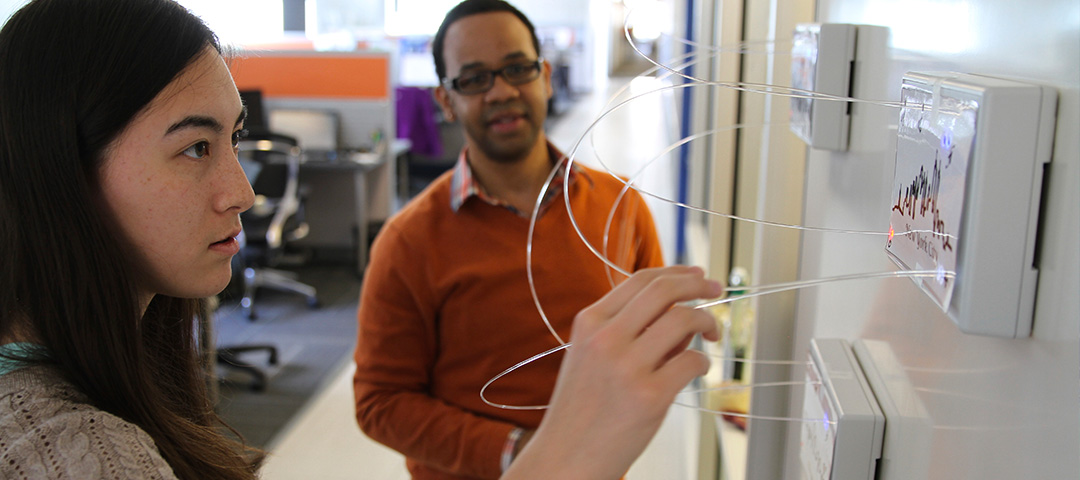USA Science & Engineering Festival
 isbscience.org/news/2014/03/24/usa-science-engineering-festival-2/
isbscience.org/news/2014/03/24/usa-science-engineering-festival-2/
Networks are everywhere – from communications and transportation to social and biological – but we take most of them for granted. Three ISB scientists (Chris Lausted, senior research engineer; Aaron Brooks, graduate student; and Martin Shelton, postdoc) and high school intern Sarah Williams are collaborating on a project for the USA Science & Engineering Festival on April 26-27 in Washington D.C. to demonstrate just how essential networks are. The team engineered an interactive network activity involving circuit boxes that represent nodes and fiber optic cables to connect them. There will be a companion site that offers a network design game that tests your ability to build a communications network able to withstand "random connection failures." The team hopes to convey how studying networks can help scientists better understand and predict health and wellness. Learn more about the festival at usasciencefestival.org. Aaron and Martin will be attending the festival and we will report back after they return.









